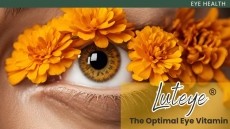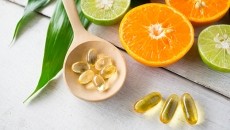Lutein in both free and ester forms promotes eye health in two weeks: Study

According to a study published in Nutrients, Spanish researchers found that taking 6 mg of lutein in both free and ester forms for 15 days provided consumers with optimal levels of the extract in their bodies.
"There is a large global demand for lutein in the dietary supplement market, with marigold flowers being the main source, mainly as lutein esters," the researchers wrote. "As the bioavailability of lutein from free or ester forms is controversial, our aim was to assess the bioavailability of lutein (free vs. ester) and visual contrast threshold (CT)."
Their findings also showed zeaxanthin, which is found in marigold extract but at much lower concentrations than lutein, produced a sizable increase in its serum concentration.
Lutein bioavailability and ARMD
Although marigold flowers (Tagetes erecta) are the primary commercial source of lutein for dietary supplements, lutein and zeaxanthin are in the diet in both the free and ester form. While they are found in free form in green leaves (vegetables), they are esterified with many fatty acids in some leaves and tubers and especially in many ripe fruits.
Consuming high dietary lutein can minimize the risk and progression of age-related macular degeneration (ARMD), along with improving vision and cognitive function, the study noted. In addition, understanding the bioavailability of lutein in different populations can provide insight into how it may influence various conditions.
"As more studies on lutein bioavailability (free versus ester) are needed, preferably in subjects with well-defined characteristics and in studies acting as their own control, our aims were to assess lutein bioavailability, free versus ester forms, taking into account two potential confounding factors, sex and age, and to provide an approach to the assessment of visual function in the context of lutein supplementation," the researchers wrote.
Study details
The randomized crossover study recruited 24 healthy subjects (12 female, 12 male) in two different age groups (20 to 35 and 50 to 65 years) with no history of cataract or any ocular disease impacting the macula.
Participants consumed a marigold extract lutein supplement (free or ester form) of 6 mg lutein/day for two months, continuing with their typical diet. Both free and ester forms were provided as capsules by Goerlich Pharma International, GmbH (Edling, Germany) using Flora GLO 10% VG TabGrade (Kemin, Des Moines, IA, USA) and from Xangold 10% (Cognis, Monheim am Rhein, Germany). After a two-month washout period, subjects switched groups.
Over seven days, a dietician assessed dietary intake of carotenoids using food records at the beginning of two intervention periods. These records were kept for that period and were collected and reviewed with the participant, as the dietician asked questions about the quantities or items to identify the food or drink consumed.
The researchers collected participant blood samples and performed carotenoid extraction on fasting serum samples. Next, they monitored visual function by measuring contrast threshold (CT) with and without glare (Contrast Glaretester, CGT-1000, Takagi Sciko Co. Ltd., Nagano, Japan) at zero, 40 and 60 days during the study.
Participants had an increase in both xanthophylls in the serum, which reached a plateau after 15 days for lutein and 40 days for zeaxanthin. Serum lutein responses at 6 mg/d resulted in a 2.4-fold increase.
“Longer supplementation, up to two months, does not significantly alter the concentration achieved but may contribute to an increase in macular pigment (a long-term marker of lutein status) and thus improve the effect on visual outcomes,” the researchers wrote. “Serum lutein reaches a plateau concentration but may contribute to an increase in long-term marker of lutein status.”
As for the visual assessment, the researchers indicated that lutein and zeaxanthin are carried in the blood by lipoproteins and "deposited in the retina, where they form, together with mesozeaxanthin, the macular pigment (MP), which acts as a blue light filter and can be considered a marker of long-term dietary exposure.”
This MP then increases with lutein and zeaxanthin supplementation and is associated with improvements in contrast sensitivity and visual performance, which is dependent on dose in healthy participants and in participants with impaired vision. Contrast sensitivity often decreases with several ocular conditions.
“In this study and mainly under glare conditions, in the whole sample and grouped by age, as the serum lutein concentration increases, the CT value decreases, especially in the medium and high frequencies, and therefore, the contrast sensitivity increases,” the researchers noted.
There were no differences in serum lutein responses or CT responses to free or ester lutein at any time point.
Source: Nutrients
doi: 10.3390/nu16101415
"Bioavailability of Lutein from Marigold Flowers (Free vs. Ester Forms): A Randomised Cross-Over Study to Assess Serum Response and Visual Contrast Threshold in Adults"
Authors: Begoña Olmedilla-Alonso et al.














